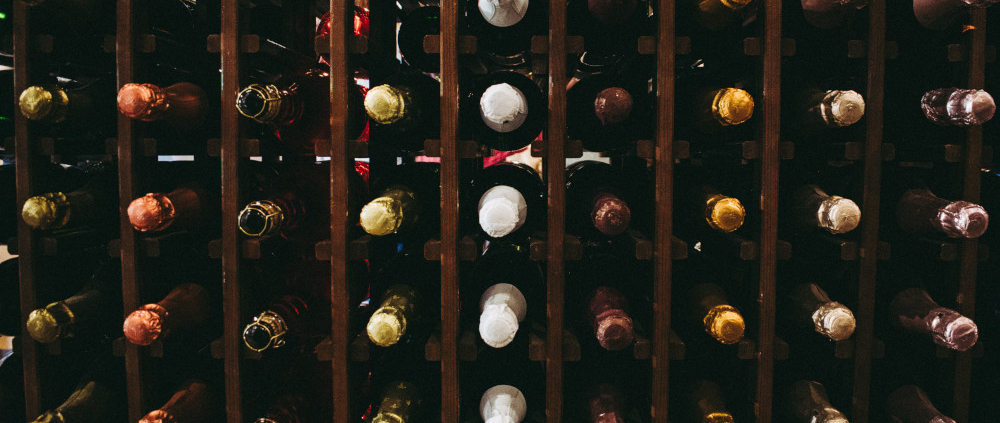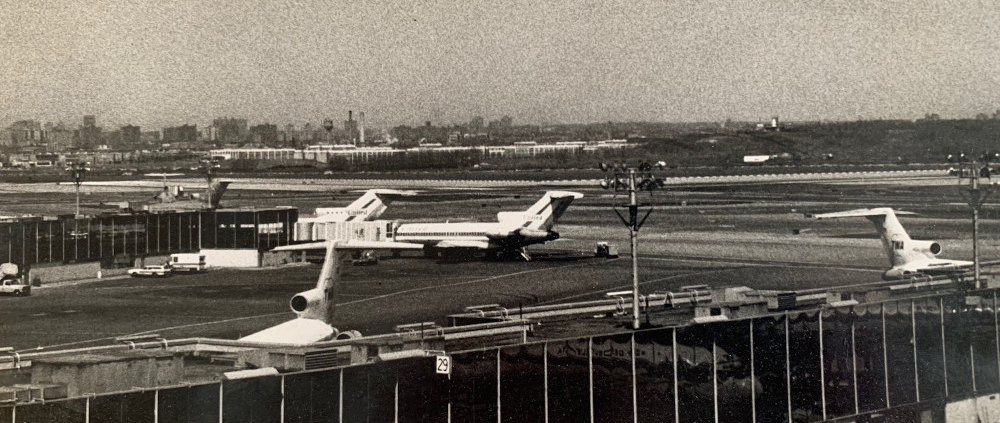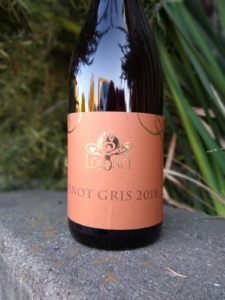While browsing around our shop, you might notice some bottles of wine do not utilize a capsule, while others have a simple black capsule or a decorative, colorful capsule. A few bottles might even boast a wax seal. Does it make a difference?
Why do producers use capsules?
Capsules are the metallic or plastic wrapping you’ll find around the neck of the bottle–the enclosure that you remove with a knife or foil cutter before popping the cork. The presumed purpose of this capsule is to protect the cork during storage from such things as insects, rodents, and mold. Capsules also help identify wines while stored horizontally.
If you’ve ever searched for a bottle of Champagne or Burgundy in our shop, you’ll notice most producers have very specific capsules that stand out from one another. In addition, they can also protect the label from wine drippings when the bottle is poured. Capsules were most commonly made from lead before the 1980s; today they are usually made from aluminum, plastic, or tin.
What does a wax seal indicate?
Some producers use a wax seal instead of metallic or plastic. While a wax seal is mostly for aesthetics, it can also aid in preserving the freshness of a wine. While a metallic capsule will protect a cork from damage, it does not affect the ability for oxygen to transfer between inside and outside the bottle. A wax capsule is mostly air tight, eliminating oxygen transfer (similar to a screw cap).
Due to the lack of oxygen transfer, it can be hypothesised that wax seals will reduce the ageability of a wine, although I was not able to find any definitive experiments on this. Below, however, is an image showing the aging progression of a wine using 14 different types of cork/caps. Note how the far left bottle, with a screw cap, has barely changed over the course of 10 years.

Variance in aging of wines with different corks. (source: Australian Wine Research Institute)
Why would a producer decide to exclude a capsule?
Well, there isn’t a single answer, but it usually comes down to cost efficiency, elimination of waste, and aging capability. If a producer is making a wine that is intended to be enjoyed young, there is no need to account for storage, and chances of the cork becoming damaged are low. So if you find a bottle of wine without a capsule, this is usually an indication the wine should be opened in the near term. Eliminating the cost of producing all of those capsules can potentially allow the producer to reduce the price of the wine–and it is a more environmentally friendly approach as well.

Various Capsules
Does the lack of a capsule affect the quality of a wine?
Nope! As mentioned above, the use of a capsule nowadays is mostly for aesthetics and has a minimal effect on the wine. When you find a bottle of wine without a capsule, it will often come from a smaller producer, or possibly a more eco-conscious producer trying to reduce its footprint. Whatever the rationale, you can be assured the quality of the wine is not dependent on the use of a capsule.
You can read Part I of this essay here.
When B. sat down at the piano and made
A transparence in which we heard music, made music
In which we heard transparent sounds, did he play
All sorts of notes? Or did he play only one
In an ecstasy of its associates […]
–Wallace Stevens
Intimacy
I think we need intimacy every day. For me that happens when I hold my wife’s hand, even for a moment when we cross the street, or when my daughter curls up with me and asks me to read to her. I feel close to the world when I read a good poem or when I have a great glass of wine–when metaphor or image lets me in on my own life.
How We Know Where We Are
I remember the day we did nothing
but walk down Willow Glen Road
through fields of Queen Anne’s lace
and lavender thistle toward a pond
quietly leaking its algae scents
to the air. Two wagon wheels rolled
with rust are repaired by their place
in some history, details so smooth
that missing spokes speak like vertebrae.
A stone carriage house holds these
memories like fixed stars, ghosts
of a yellowed cosmology, the first
chapter in a book where the sky
supports the handmade walls, where
rainwater collects easily, puddling
the soft earth. This could be the day
your father said he was leaving ––be back
soon, he said, and you knew it didn’t
matter because you would always remember
how the smoke poured from his mouth
as he spoke, and ferried his words
across the great body of water between
you. It could have been any evening
somewhere in Pennsylvania when your son
asked if he could visit the stars, reach
out and grab hold, needing the moonlight,
it seemed, more than you ever had.
Somewhere near the center of every memory
is a single flower, forgotten in the scrapbook
your grandmother asks you to open
each time she stays. It could have been
any day when nothing special happened,
when children sat in the sun-baked streets
popping tar bubbles, celebrating the solstice,
the friendships that spiraled by the poolside,
the summer air thick with mosquitoes
and no-see-ums circling every gesture.
These have all slipped under the folds
of another calendar when some days
got circled in red ink to remember flowers
picked along backroads, constellations
thrown into place by stories we will
tell our children, and your eyes, impossible
to imagine without the context of these galaxies.
Partial
The glottal stop is not a word but is part of speech. The invisible is in us.
Life’s not a paragraph.
Quotidian Religion
The simple things are at the center. They are signposts, and remind us with every sip that flavor interacts with feeling. When the curl of ferrous sulphate in the rosato rises, or the pinch of spice in the Chinon takes us back to our backyards. The deep well of a Meursault takes us back to our gardens, to the roses, the losses, our fingers sticky with pine. Each bottle of wine, like each friendship, connects us to our lives. The simple things hold.
The Picture
There is this picture my uncle Hank took in April 1975 at Newark Airport. There’s a 707 in the air. It’s about 250 feet off the ground and rising. My mom and brother are on the plane with me. My dad had died two months earlier. We are on our way to Florida to see Walt Disney World. The picture proves he existed. As liftoff is proof of gravity.
The old, grainy, black-and-white picture is beautiful, but you can’t see me on the aisle of row 22, my hands gripping the arm of the seat. At times we’re all invisible. It’s not that my uncle captured us in the picture so much as he captured us in time. Maybe we all have more control than we think. He held his brother a last time and for all time, though this is harder for us to see.
There are so many disappearances. I disappeared first into the plane, then into the cloud, and then into the crowd at the recently opened Orlando International Airport, and finally back to our house on Taylor Road with a different family.
*
When my mother died, I flew back to New Jersey to clean out the house where I grew up. I was surprised to find the picture––surprised I’d kept it. One evening, with the smell of cleaning solutions in every room, I was sitting at the dining room table alone. I sat looking from the picture to the woods in our backyard, and back to the picture. The woods, in their waving, I now saw, had hidden so much.
How We Protect Each Other
I close my eyes
to crimson explosions
to remember watching you
plant iris bulbs
in the wormed soil,
your wife at the sink
rubbing gently the crystal
of your wristwatch
like a coin––
where the rubbing
was a few words
whispered secretly,
saying how much it meant
that you were out there
arranging the earth
before the next rain.
Only connect.
It is, after all, the conversation under the fig tree. The figuring out, the pursuing of:
( ) or ( ) ( ) or ( ) and ( )
Chemistry
The Problem of Describing Trees
Of Films & Memories
In 1971, Pauline Kael reviewed The French Connection, starring Gene Hackman (maybe the only actor to have been in every film ever made), and in her review she says, “There’s nothing in the movie (for me) you can enjoy thinking over afterward” ––I think wine reviews that invoke that thinking will benefit wine drinkers everywhere.
*
My uncle Don died this morning.
Tradition
In the opening credits of the 1994 film Star Trek: Generations, starring both Patrick Stewart and William Shatner, we follow, as the names appear in some Hollywood sequence, an unopened bottle of Dom Perignon, Vintage 2265, as it tumbles through deep space to crash on the USS Enterprise NCC-1701-B.
There is much clapping inside the ship when the bottle explodes—and the ship doesn’t.
You can see them raise their glasses. Begin to talk…
After Work
I’m sure the stained-glass makers laughed
as they made mistake after mistake. Tracing
the cartoon while only occasionally looking
up. Trying to stay within the lines. All the
curves. An arm only later, clearly too large,
after the lead had cooled. A chest that could
in no human way support all that light. An
extra leg, a joke, noticed just before the evening
meal. The father, after the long day, telling
how the day went. The stories he took home.
Variations from the Word. The spiral of
blue where the earth should have continued.
The children still washing and laughing.
Repeating the variations, and for the first time
knowing the story is not so much a window
as it is a panel of light. As it is a story.
Last month, I wrote about dry wines (and one sweet ringer) from Tokaj, in northeast Hungary. This month, we’ll fan out into other Hungarian wine regions and explore more of the dazzling plethora of characterful indigenous grapes, wine regions (many of them, like Tokaj, with volcanic soils), and small, family-run producers.
Most Hungarian white wines offer some body and texture, along with prominent acidity and minerality. They’re also low in alcohol; all but one of the wines presented here are under 13 percent. Don’t let the unfamiliar words on the labels scare you off: I’ve included some pronunciation guidance below, and in any case, the proof is in the glass. If you love French, Italian, Iberian, and higher-acid domestic white wines, these wines will expand your horizons and add a new dimension to your meals (or Zoom happy hours).

The Hungarian wine appellations mentioned in this article (plus Tokaj, from last month’s article).
2013 Fekete Béla Somló Hárslevelű ($23)
Somló (SHOWM-low) is a wine appellation in western Hungary, not too far from the border with Austria–a low volcanic mountain rising out of the plain. Fekete Béla is by local acclaim the “Grand Old Man” of the appellation. This very wine is the last vintage that he made before retiring in his 90s. Hárslevelű (harsh-LEV-el-oo) is the grape variety, a genetic offspring of furmint that’s more aromatic and a little softer in structure.
This wine is aged in large Hungarian oak casks for two years before bottling. The nose is a festival of dried herbs, with some dried flowers playing supporting roles. There are lots of texture and body, plus a hint of sweetness, with just enough balancing acidity and a whisper of bitterness. Those who like aged Sancerre will enjoy this. And how often do you get to drink seven-year-old Hárslevelű?! Try it with herb-y pizza or pasta sauce, or just on its own at the end of a meal, maybe with an herb-crusted semi-aged cheese. (13.5 percent alcohol)
2017 Sziegl Pince Hajós-Baja Olaszrizling Birtokbor ($22)
Hajós-Baja (HI-yosh-BYE-uh) is located in southern Hungary, near Serbia. Olaszrizling (OH-loss-reez-ling), called welschriesling or riesling italico in other countries, has no genetic relationship to true riesling. It’s widely planted throughout Eastern Europe and the most widely planted white variety in Hungary. The Sziegl family started their winery in 2012, with husband Balázs in the vineyards and wife Petra running the cellar and making the wine–a new generation following the old Hungarian custom of men working in the vineyards and women running the cellars. (Pince (PEEN-sa) means cellar; it’s a word you see frequently on Hungarian labels.)
Their olaszrizling is bright, mineral, and slightly herbal, with medium body and mouthwatering acidity. It leans more toward grüner veltliner than toward riesling. GV fans, among others, should check it out. Drink it with all of those green things that you’re inclined to eat with grüner veltliner or sauvignon blanc: artichokes, green beans, basil, arugula pesto… (12.5 percent alcohol)
2018 Losonci Mátra Riesling [skin contact] ($22)
This winery, run by Bálint Losonci (low-SHOWN-see), is in the volcanic appellation of Mátra, in north-central Hungary, between Budapest and Tokaj. He and a few other likeminded small producers are rehabilitating the reputation of Mátra from decades of Communist-era industrial farming and winemaking. Bálint farms organically and works naturally in the cellar, favoring skin contact for the white wines, no filtering, and only minimal SO2 addition at bottling. All of the wines benefit from naturally high acidity due to the crazy mix of volcanic, iron-rich clay, and chalky soils in the vineyards.
This wine is true riesling–not olaszrizling—but utterly unlike any you’ve had, thanks to the soils and a week of skin contact. It’s the other end of the spectrum from a Mosel (German) riesling: spicy, smoky, redolent, textured, and powerful, yet still without overt weight or alcohol, and of course completely dry. If you love riesling, you need to try this wine–and if you don’t, you probably should try it, too, because it’s so atypical. Smoked oysters, spring rolls, kolbasz (the Hungarian version of kielbasa), and barbecue all leap to mind. My wife and I also enjoyed it with a bunch of Vietnamese dishes from Tay Ho in downtown Oakland–yes, that’s a plug. (12.5 percent alcohol)
2017 VáliBor Badacsony Kéknyelű ($32)
Kéknyelű (cake-NYAY-loo) is the grape variety, of which there are 41 hectares (100 acres) in existence, all of them in Badacsony (BOD-ah-chah-nya), a region on the northern shores of Lake Balaton in western Hungary. The producer, Péter Váli, has the perfect description of this wine: “It tastes like frosted basalt rocks.” There’s a smoky, flinty minerality. It’s textural, but with knife-edge acidity. This is a special wine; it’s age-worthy, and also drinking great now. Chablis drinkers will love it–and it offers Premier Cru quality at a Village-level price. Think oysters, Petrale sole, and shrimp risotto. (12 percent alcohol)
2018 Losonci Mátra Pinot Gris [skin contact] ($23)
Here’s another skin-contact white (or, more properly, gray/gris/grigio) from Bálint Losonci in Mátra. Three weeks of skin contact give a medium rosé color and extravagantly spicy nose with minerals, rocks, and baking spices. Aficionados of skin-contact white wines, step right up: This is your (dry) jam. There’s some tannin, so pair it with proteins: Meats (pork, chicken, tacos al pastor) and hard cheeses work well. Or, if you like a gentle tannic twang unadulterated, go for it. (12.5 percent alcohol)
Many thanks to Eric Danch of Danch & Granger Selections, the importer and distributor of all of these wines, for his help with this article.











